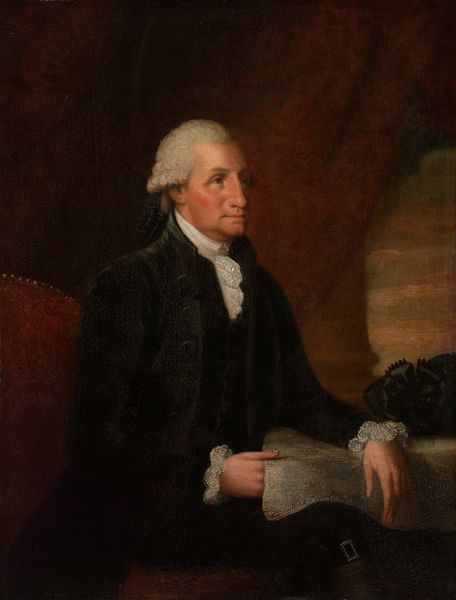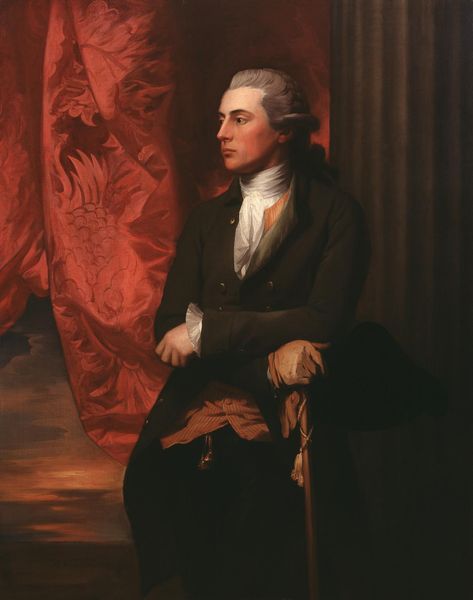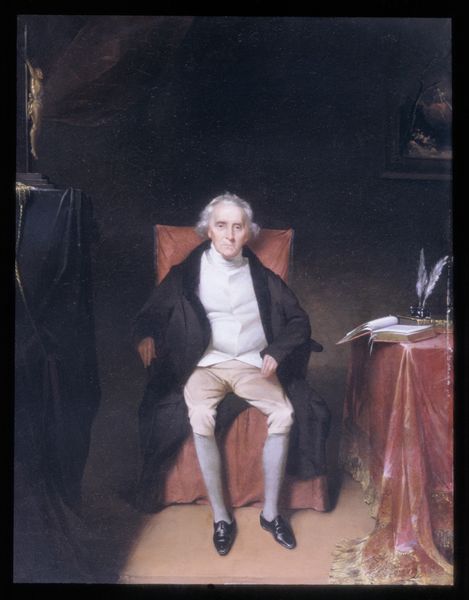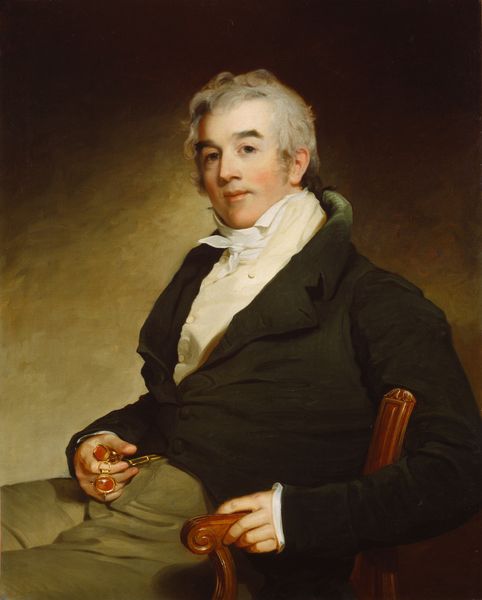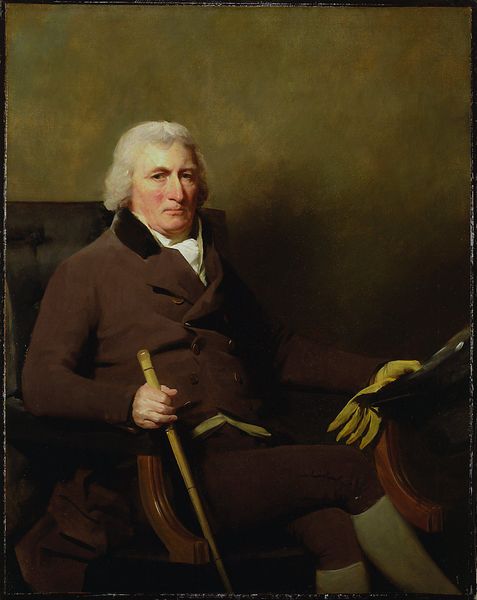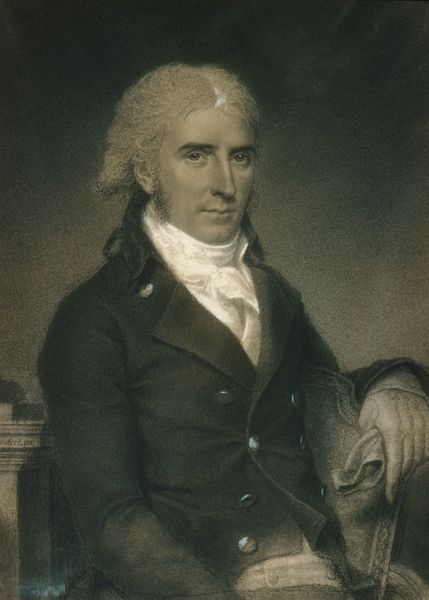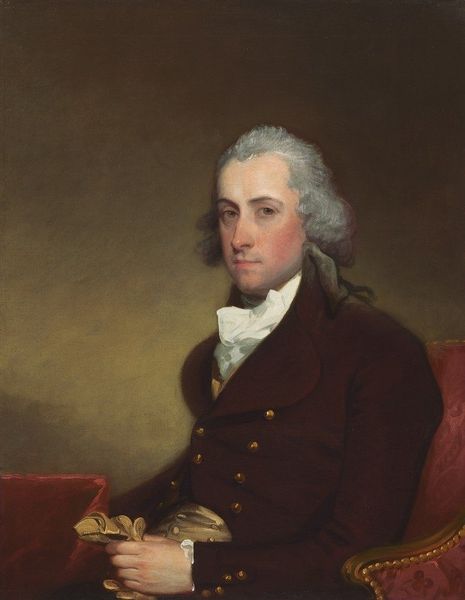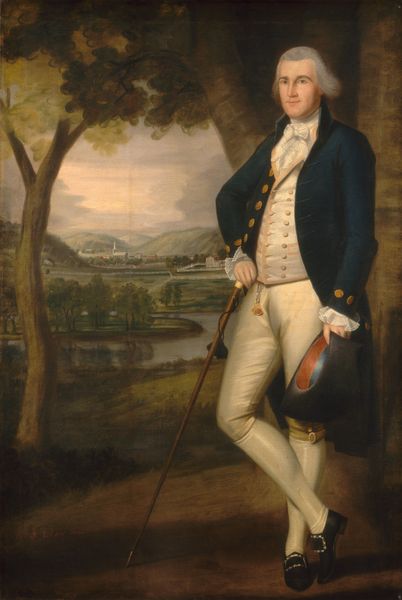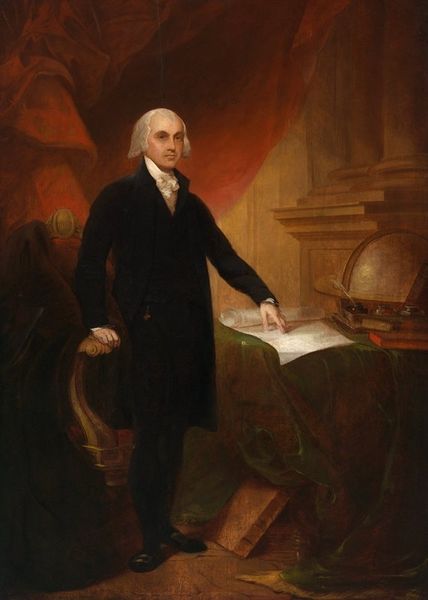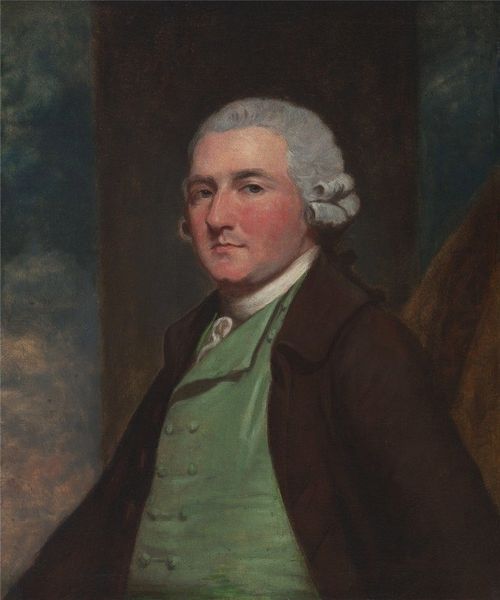
painting, oil-paint
#
portrait
#
neoclacissism
#
painting
#
oil-paint
#
landscape
#
classicism
#
men
#
history-painting
Dimensions: 163.2 × 107.3 cm (64 1/4 × 42 1/4 in.)
Copyright: Public Domain
Curator: The painting before us is titled "Noah Smith" by Ralph Earl, created in 1798. It’s an oil-on-canvas portrait now residing here at the Art Institute of Chicago. Editor: Oh, he has such a serene air about him. Almost…untroubled, despite the obvious formality of the setting. It’s as if he’s completely at ease. Curator: Well, such composure was probably the aim of the artist and the sitter. Portraiture of this era was often as much about constructing a particular image as it was about capturing a likeness. We have here all of the trappings of success and knowledge: the fashionable clothing, the backdrop of books, and, significantly, the map on the table. These elements reflect not just Smith's personal attributes but his participation in the societal and intellectual movements of his time. Editor: The map… yes, that's what pulled me in. It's not just a detail, it feels almost symbolic, hinting at ambition and maybe even the taming of the American landscape at that time. I wonder where that map leads us if we follow its imagined paths. Beyond that open window perhaps? Curator: Exactly! It invites us to consider the broader historical context – the period of expansion and nation-building that defined America. It reflects an era of intellectual inquiry, land ownership, and participation in trade and governance were visually promoted as values. Earl has set him, rather neatly, in a space that projects not just wealth but his contribution to these values. Editor: And look at the colours! That dark coat really frames the subject's bright features and makes him come forward. I can see that he used an open window as another contrasting frame, almost a stage, drawing the eyes and mind in all sorts of directions at the same time. Curator: That interplay of light and dark would indeed capture the attention of his patrons. There's also something to be said about that window! In this genre of portraiture, a landscape is commonly added in the composition to reinforce an explicit statement. Here we are provided context to Smith as not only being worldly, but also locally placed to the community around him. The background seems to convey more than just what meets the eye, doesn’t it? Editor: Definitely. It really does make you wonder about the stories and hidden agendas. This quiet man might have been so much more than we imagine, as were many Americans at the time. Curator: A thought worth carrying with you as we go. These portraits act as echoes of identity from another era, still whispering stories today.
Comments
No comments
Be the first to comment and join the conversation on the ultimate creative platform.
